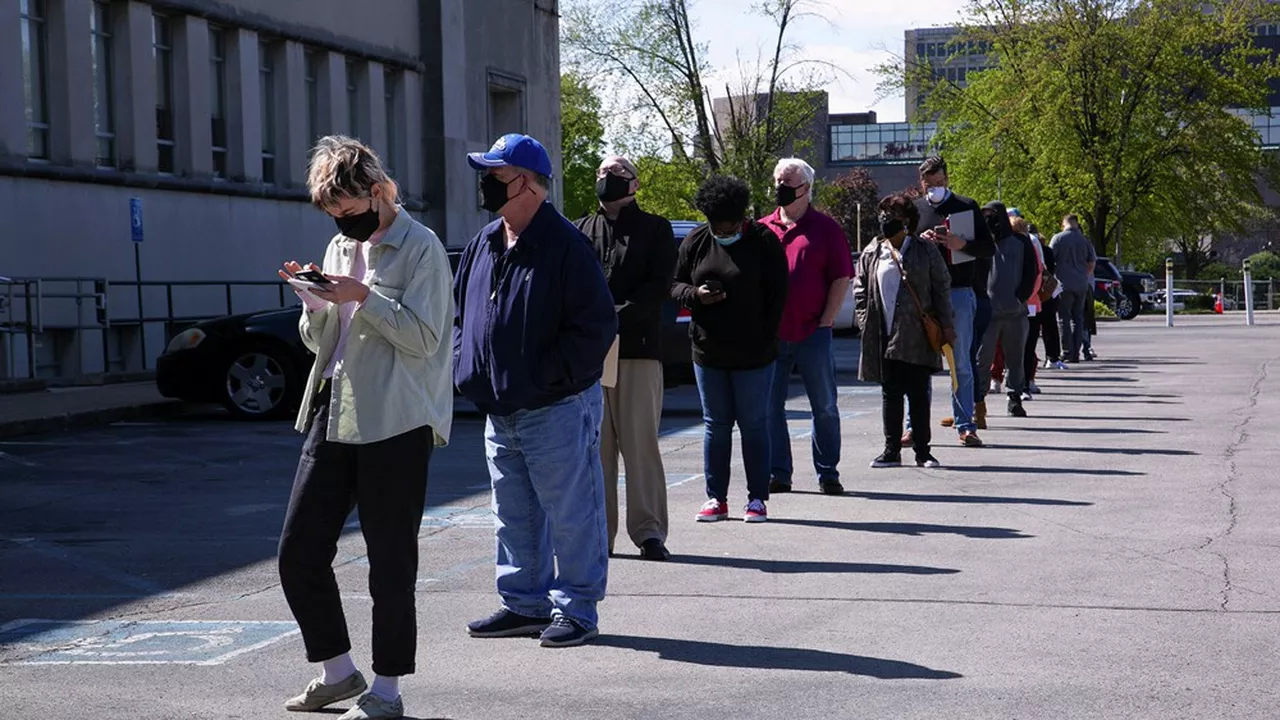
While the health situation has improved, the latest unemployment figures have been disappointing. For the Republicans, they are a consequence of the benefits received by the unemployed, and 22 states have decided to do away with the emergency supplemental benefits implemented at the start of the crisis.
The debates were heated in the U.S. Congress; they are picking up at the local level. Several states have decided to remove the supplemental benefits which were implemented during the crisis to help the unemployed. In those 22 states, all Republican-led, those who have lost their job will no longer receive emergency unemployment benefits, starting in June or July.
They had been able to receive an extra $300 a week through a measure passed early on in the crisis which was reinforced through Joe Biden’s stimulus package, the American Rescue Plan, and extended to Sept. 6. It has allowed hundreds of thousands of crisis-hit Americans to maintain their purchasing power in a country where unemployment benefits are a lot lower than in Europe. They cover on average between 5% and 55% of previous net income, depending on the state and personal circumstances, according to data from the Organization for Economic Co-operation and Development (compared with 62% to 84% in France).
Workforce Shortages in Some Industries
According to Oxford Economics’ estimates, the removal of those benefits affects almost 3.5 million people, 2.5 million of whom will lose every benefit they have been receiving because they were not entitled to any previously. This includes, for instance, the self-employed and drivers of passenger vehicles for hire, who cannot normally claim those benefits. In total, the impact on households of the removal of the emergency measure should reach $8 million, or 20% of all emergency benefits handed out in the month of April.
For Republicans, this is a matter of encouraging the unemployed to find a job. The disappointing unemployment figures in April pushed them to take action, when some industries are struggling to hire. “The reason is simple,” justified Florida Gov. Ron DeSantis, in the latest state to remove the benefits. “We’ve got almost a half-a-million job openings in the state of Florida. We’re proud of the fact that we’ve got a lot of economic momentum and so now we’re transitioning from relief in the midst of a crisis to now having the more traditional reemployment outlook.”
Underlying Factors
The Biden administration is looking to circumvent this so that affected Americans may continue receiving supplemental benefits. But states enjoy great autonomy and they are the ones handing out the benefits. And while the government is otherwise engaged in tough negotiations over legislation, such as the infrastructure bill, the Republicans have also introduced bills to outright abolish those supplemental unemployment benefits at the national level. There may, therefore, be other battles to fight.
The question divides economists. A report from the Federal Reserve Bank of San Francisco recognized that the measure played “a small but noticeable role in some Americans delaying their return to the job market.” For others, though, the explanation lies elsewhere: many schools are still closed and child care remains an issue, the fear of COVID-19 is still strongly felt despite vaccination progress. And for many Americans, the crisis has presented an opportunity for a career change. Other underlying factors, such as persistently low wages, can also explain the reluctance of some to get back to the labor market: the last increase of the federal minimum wage dates back to 2009.

Leave a Reply
You must be logged in to post a comment.